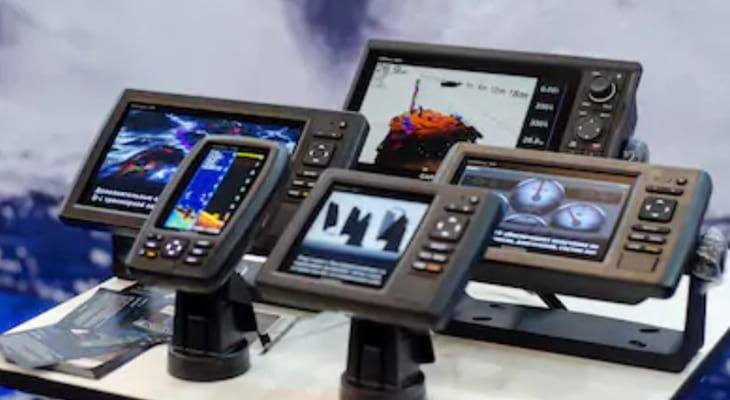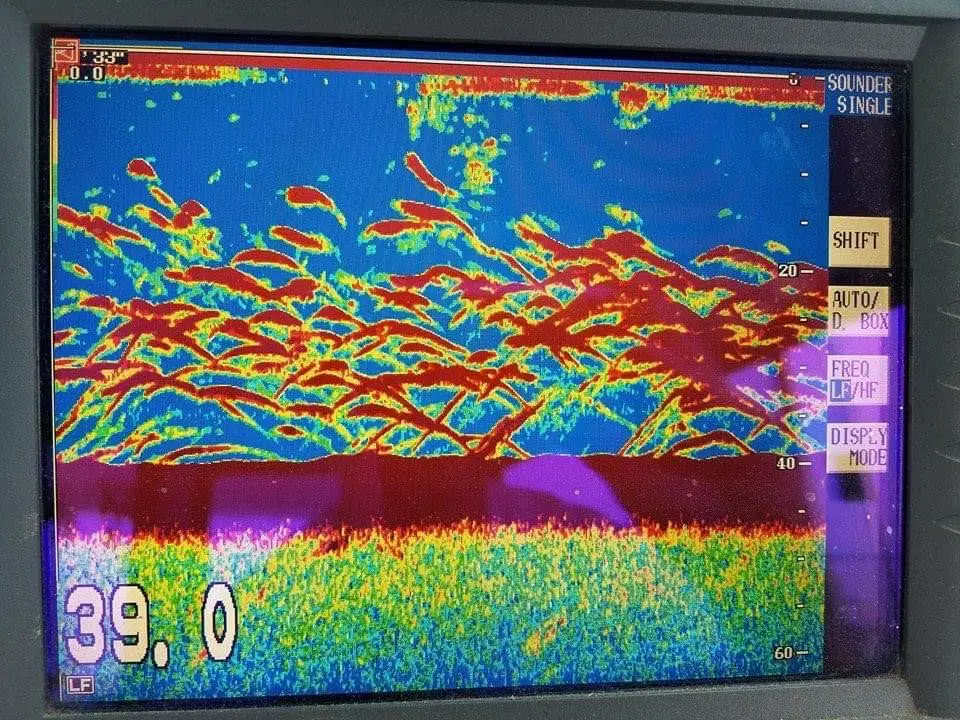Fish finders are worth the money for anglers seeking improved fishing success and efficiency. They locate fish, map underwater structures, and monitor water depth and temperature, allowing for more precise targeting of fish species.
The investment is particularly valuable for serious or competitive anglers and those fishing unfamiliar waters.
Fish finders are certainly worth the money and have proven to be game-changing to catch more fish for both competitive fishing and recreational angling. Fish finders are incredibly useful, but that usefulness often comes at a high cost for many anglers.
If you’re on the fence about purchasing your own fish finder, I’ve compiled this article to help explain some of the benefits you’ll have with a fish finder and how it can be a great tool when used correctly.
Table of Contents
Why Do You Need a Fish Finder?
Anglers years ago used to be required to scour maps, scout locations, and do serious research to understand what lay beneath their boats on the water. An element of mystery comes from fishing without the aid of a fish finder, but it’s more difficult for most anglers.
Having a fish finder shouldn’t be looked at as cheating but rather as a means to enhance your strategy and preparedness when fishing for the species you want to catch. Many fish finders today function more like a digital journal and map that allows anglers to make their notes about specific locations, record promising sites and hidden gems, and gain a better understanding of the body of water they’re fishing on.
Whether fishing on the ocean or a small lake, a fish finder will ensure that you aren’t wasting your efforts fishing in poor locations. It might also serve as a safety mechanism as it will allow you to view the depth of the body of water you’re in, which will alert you when you’re in shallow water that might be dangerous.
The following sections will explain why I believe fish finders are worth the money for anglers of all skill levels.

Better Time Management
Nobody wants to waste time fishing in an area of a lake or the sea that doesn’t have much fish. With a fish finder, you’ll instantly tell if there are fish below and whether or not you need to stop and take a few casts. This can be extremely useful when fishing for certain species in both saltwater and freshwater that are concentrated together in tight groups and schools.
The improved time management that a fish finder affords a recreational angler is considerable, but it’s even more helpful for professional anglers and guides. Many fishing charters and guides work as full-time guides throughout the entire year, and they must maximize their efforts as much as possible.
A good fish finder will allow a professional fishing guide to make better use of their time and keep their client on the fish without wasting time in areas that are not productive. A fish finder could mean the difference between not turning in a limit of fish and winning a significant paycheck for professional anglers.
Keeping Track of Water Temperature
Experienced anglers know that water temperature is often the single most crucial factor in catching fish of all species, in both freshwater and saltwater. Having a fish finder will allow you to monitor the water temperature and better anticipate when fish will spawn or move into the shallows and become more active.
Many of the new fish finder models provide even more features related to monitoring the water temperature. Anglers can make notes at specific spots on a body of water and record the water temperature and how the fish are behaving at a particular time of year. By keeping a record of where fish are located at certain intervals of water temperature, you can rely on the previous year’s notes and records to better understand where the fish you’re targeting are going to be once the water temperature continues to warm.
Structure and Cover
A fish finder is more than just an electronic device used to detect fish and record water temperature. It’s also an outstanding tool that can be used to understand what kind of structure or cover there might be on the bottom and whether or not fish are near this cover. Fishing without a fish finder would often leave many anglers to blindly hope that there is ample cover for fish in specific locations, but you can be confident with a good fish finder.
I like to use my fish finder to mark specific spots that feature cover or structure along with depth changes when fishing for largemouth bass. Even if it’s a day when the bass are feeding in open water and not holding close to cover, I can place a marker in the fish finder that tells me what type of cover is at the bottom and the depth and other factors.
Better quality fish finders will cost more, but they will also allow you to view the submerged structure and cover on any lake or offshore environment with incredible accuracy. Using a quality fish finder often will enable you to quickly tell the difference between a pile of logs or standing timber—which would remain a mystery to many anglers not using a fish finder. Some of the new fish finder technology is so advanced that it’s being used by search and rescue teams to locate submerged vehicles.
Track Bait Fish
One of the major advantages of having a good quality fish finder is to view schools of baitfish or shad. These schools are usually the prime target for many types of fish in freshwater and saltwater. In the more temperate months of the year, between the extreme cold and heat, many fish will roam around some regions of lakes and rivers, seeking schools of shad and baitfish to feed on. Having a fish finder will let you locate such schools and tell whether fish are giving attention to the baitfish.

Keep a Record
Modern fish finders provide anglers with many features that let you make notes that will serve as a fishing journal later on. It’s long been confirmed that the best anglers are known to keep a detailed journal of each day they spend on the water, making locations, water temperature, and various other details that will be pertinent later in the year or further down the road.
Anglers can build up a handy collection of notes regarding a specific lake or other body of water that can serve as an interactive fishing journal that keeps track of virtually anything you want. This feature is often most valuable for professional anglers who fish, year after year, on the same set of lakes and rely heavily on previous data to develop their fishing strategy.
Waypoints
One of my favorite features of any modern fish finder is the ability to store waypoints. If you arrive at a spot on the sea or a lake teeming with fish, or one that might look promising for the future, you can easily place a waypoint on your fish finder to mark the spot for a later return. Having a set of waypoints for every month of the year on various lakes is the key for many anglers that compete in fishing tournaments.
The newer fish finder models allow anglers to set various kinds of waypoints in their fish finders. These models allow you to record notes along with this waypoint. Being able to quickly view some of your most important notes while on the water will enable you to make adjustments in the middle of a tournament instead of going home and flipping through a notebook.
Conclusion
I fished for many years without a fish finder and even more years with an old Humminbird that I purchased more than 20 years ago. A few years ago, I acquired a new fish finder and realized what I had missed. Whether you fish on a kayak or boat, a fish finder will seriously pave the way for success and can result in major results for serious anglers who put them to use.
If you’re still on the fence about whether or not fish finders are a waste of money, consider asking any angler that has one if they might feel fishing without it in a tournament or even a recreational trip. You should expect to hear a resounding ‘no’ from anyone because fish finders have proven to be helpful to any fisherman that uses them.
Like anything else in the fishing industry, a quality fish finder will cost more than a lower quality model. If you’re interested in seriously upping your game on the water, I recommend investing in a high-quality fish finder, as it will undoubtedly prove helpful.
